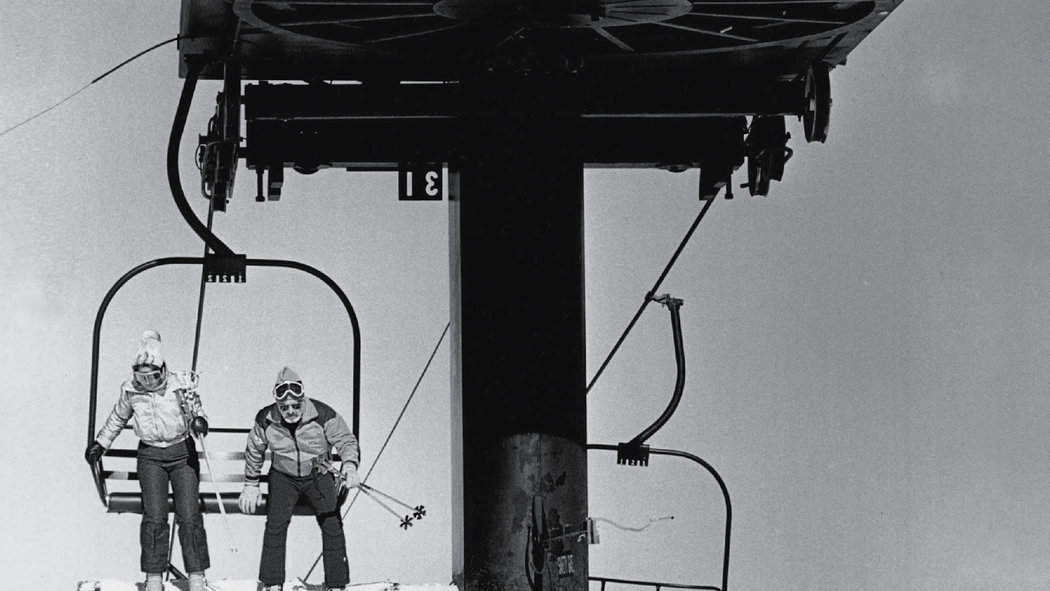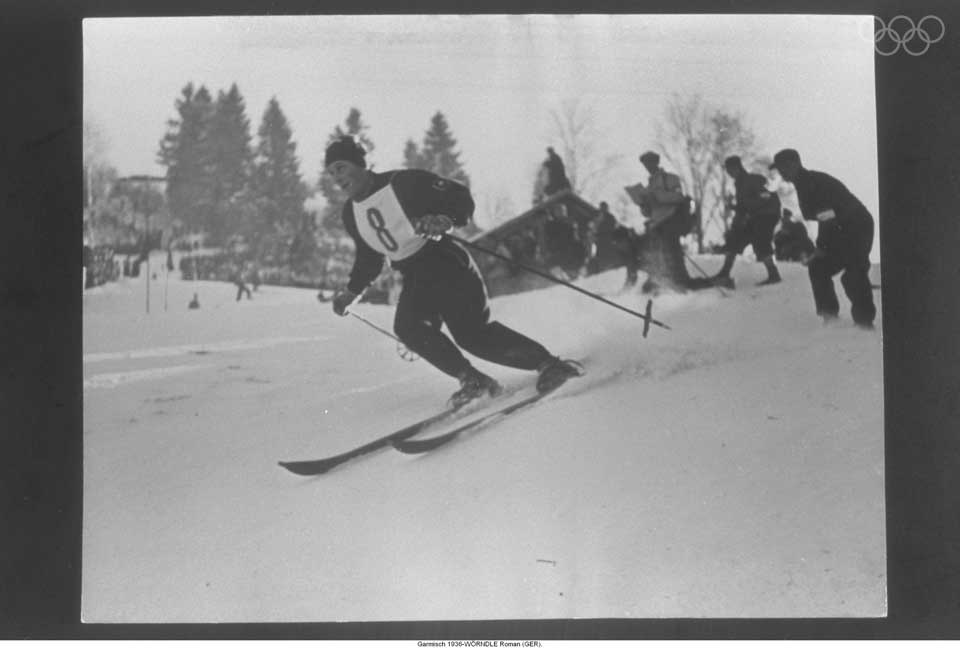Skiing dates back centuries. One of the first known ski competitions was a cross-country race held in Norway in 1843. In California during the 1860s, there were downhill courses competed on. They used twelve-feet long skis that only had toe straps, so their heels were not attached to the ski. The first ski jumping event was in 1879 in Norway.
Before the mid-nineteenth century, ski bindings only attached the toes to the ski. This made it nearly impossible to ski downhill on steep slopes. Around 1860, a Norwegian man named Sondre Nordheim tied wet birch roots to his skis. They tied around the boots from the toe to the heel. When the birch roots dried they were able to provide better stability and control than before. Because of this, downhill skiing on steep slopes became possible.
The first chairlift was invented in the 1930s. Before this, skiers had to walk uphill to ski down a slope. Chairlifts, gondolas, and rope tows made it so skiers could ski much more in a day than they were previously able to. The invention of chairlifts also made downhill/alpine skiing a much more popular sport. It started in Europe and North America, then traveled to Argentina, Chile, Japan, New Zealand, and Australia. The popularity of skiing increased even more in the 1950s when ski events were televised. Snowmaking machines also helped with the sport’s popularity, as they were invented in the late 1950s.
The first Winter Olympics, held in Chamonix, France in 1924, included nordic skiing. Though in the 1936 winter olympics held in Germany included alpine skiing because of its increasing popularity. The only events that year were a combination of downhill and slalom and ski jumping. In 1948 they separated. During the next olympic games giant slalom was included. And lastly, in 1988 super giant slalom became a separate event.



